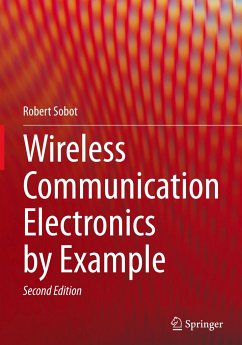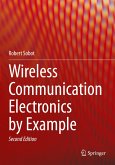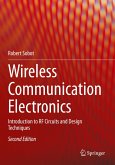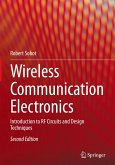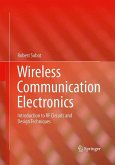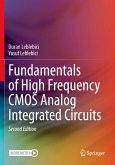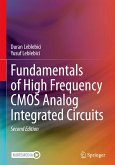This book is intended for senior undergraduate and graduate students as well as practicing engineers who are involved in design and analysis of radio frequency (RF) circuits. Fully-solved, tutorial-like examples are used to put into practice major topics and to understand the underlying principles of the main sub-circuits required to design an RF transceiver and the whole communication system.
Starting with review of principles in electromagnetic (EM) transmission and signal propagation, through detailed practical analysis of RF amplifier, mixer, modulator, demodulator, and oscillator circuit topologies, as well as basics of the system communication theory, this book systematically covers most relevant aspects in a way that is suitable for a single semester university level course. Readers will benefit from the author's sharp focus on radio receiver design, demonstrated through hundreds of fully-solved, realistic examples, as opposed to texts that cover many aspects of electronics and electromagnetic without making the required connection to wireless communication circuit design.
Offers readers a complete, self-sufficient tutorial style textbook;Includes all relevant topics required to study and design an RF receiver in a consistent, coherent way with appropriate depth for a one-semester course;Uses hundreds of fully-solved, realistic examples of radio design technology to demonstrate concepts;Explains necessary physical/mathematical concepts and their interrelationship.
Starting with review of principles in electromagnetic (EM) transmission and signal propagation, through detailed practical analysis of RF amplifier, mixer, modulator, demodulator, and oscillator circuit topologies, as well as basics of the system communication theory, this book systematically covers most relevant aspects in a way that is suitable for a single semester university level course. Readers will benefit from the author's sharp focus on radio receiver design, demonstrated through hundreds of fully-solved, realistic examples, as opposed to texts that cover many aspects of electronics and electromagnetic without making the required connection to wireless communication circuit design.
Offers readers a complete, self-sufficient tutorial style textbook;Includes all relevant topics required to study and design an RF receiver in a consistent, coherent way with appropriate depth for a one-semester course;Uses hundreds of fully-solved, realistic examples of radio design technology to demonstrate concepts;Explains necessary physical/mathematical concepts and their interrelationship.

